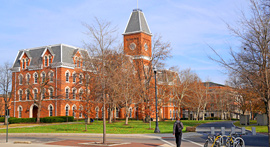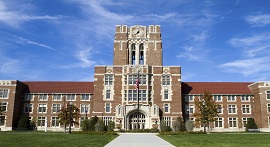Statistician
A Day in the Life of a Statistician
Statisticians collect data and analyze it, looking for patterns that explain behavior or describe the world as it is. A good statistician is involved in survey development and data collection from the beginning, ensuring the validity and usefulness of the data. Statisticians are employed by private and public concerns and apply their skills to specific industry issues, such as economic analysis, inventory control problems, health problems, and even television demographics. Statisticians must be familiar with valid scientific protocol and be able to quickly familiarize themselves with baselines and historical industry figures in order to structure an uncompromised analysis. Statisticians spend over half their day in front of a computer, setting up models, manipulating data, analyzing data, or writing reports. “You don’t just crunch numbers. You explain them,” wrote one veteran statistician, who said that writing skills are important for those hoping to advance in the field. They spend the rest of their day in meetings, in planning sessions, or on the telephone exchanging ideas with colleagues. Respondents said, “Statistics is a visual science. You have to be able to picture the data and how it fits in with other known data shapes. It is not a Ônumbers only’ job.” Most statisticians are applied statisticians, tailoring studies to real-life problems. It takes mathematical, visual, and practical skills to excel in this occupation as well as flexibility, curiosity, and a rigorous mind. Statisticians said the most difficult part of their job is explaining the implications of their studies to non-statisticians. Many said that statistics are best used as a starting point for investigation, not as a conclusion, and upper-level managers find this concept difficult to grasp. One wrote, “Statistics is a science of trends and probabilities, not certainties. We can tell what things happened, and suggest why they might have happened, but they’re only suggestions.” Many statisticians cited the support of the statistician community as important to their satisfaction in the field. Statisticians feel challenged, involved and invigorated by their work, and this is evidenced by the small number (under 11 percent) of statisticians who leave the field each year.Paying Your Dues
There are strict academic requirements for becoming a statistician. Entry-level positions require a Bachelor’s degree in Mathematics or Statistics. Those who wish to rise in the profession should consider obtaining a Master’s degree or a Ph.D. Just under 100 universities offer graduate degrees in statistics. Suggested coursework includes mathematics (calculus and linear algebra), probability, logic, psychology, and computer science. Candidates who combine statistical skills with another major that reflects their professional direction-such as economics and econometrics, computer and material science, or biology-have a distinct competitive advantage when seeking employment. Membership in professional organizations is not required, but many choose to join the ones affiliated with their occupation, such as organizations for economists or manufacturers.Present and Future Outlook for Statistician Careers
Statisticians first became noteworthy in the study of infectious disease outbreaks. In the 1800s, they were able to trace an outbreak of cholera to a single water supply. The growth of actuarial science increased the need for statisticians, and demand has surged again with the development of computer science. Almost 90 percent of America’s industries use statistics in their daily operations. The opportunities available to statisticians are expected to grow in the future, due to an increasing reliance on expert analysis, growth in industries that use statisticians (entertainment, advertising, computer science, etc.) and general growth in the economy. Statisticians with interdisciplinary skills, such as biology, economics, and chemistry, should find it easier to obtain positions than pure statisticians. Employers often expect statisticians to obtain a graduate degree not in statistics, but in the related discipline of their choice.Quality of Life
PRESENT AND FUTURE
FIVE YEARS OUT
TEN YEARS OUT
MAJORS
RELATED GRADUATE PROGRAMS
Featured MBA Programs For You
Are you seeking the right type of b-school? Connect with MBA programs seeking candidates like you.
Find Colleges Matched to Your Interests
Explore schools of all sizes, ranked colleges, city and big-campus schools and more.
Explore Graduate Programs For You
Connect with master’s programs around the country to get an edge over the competition.



